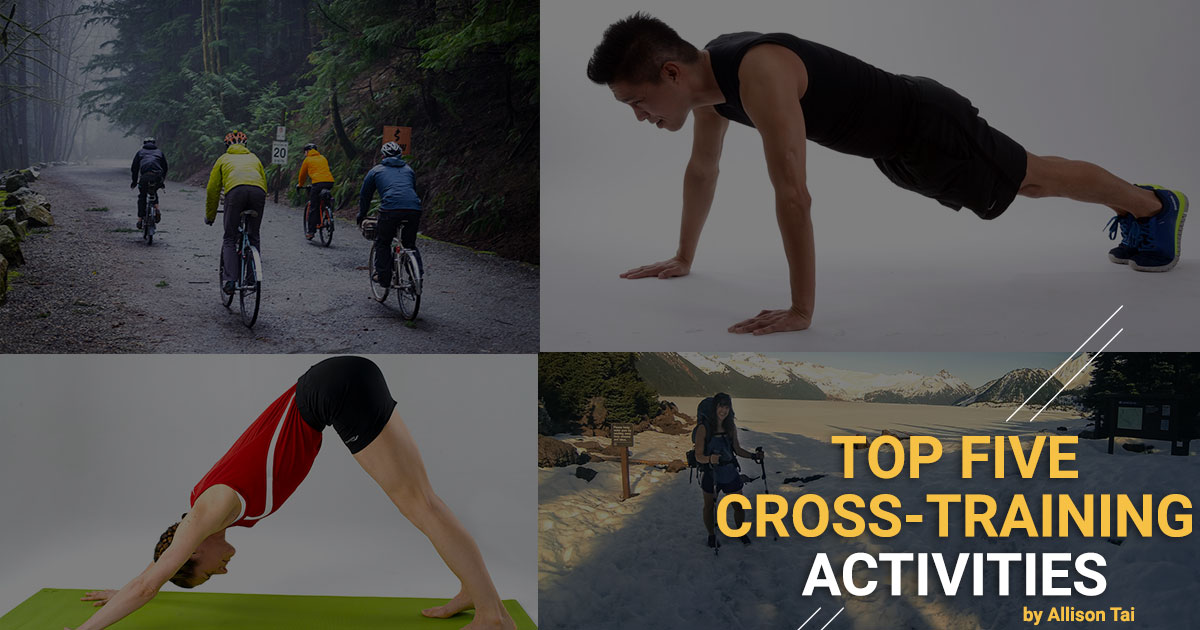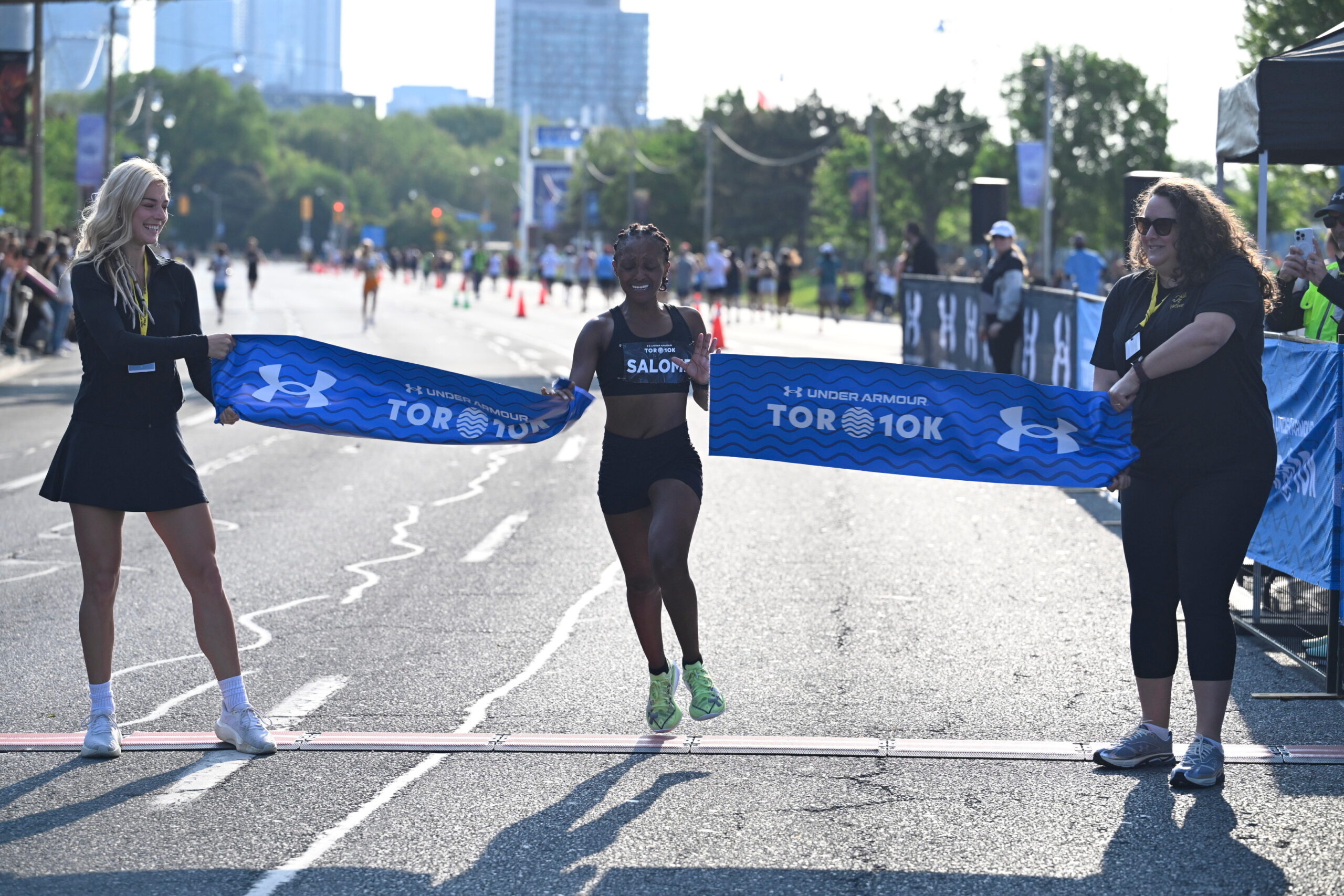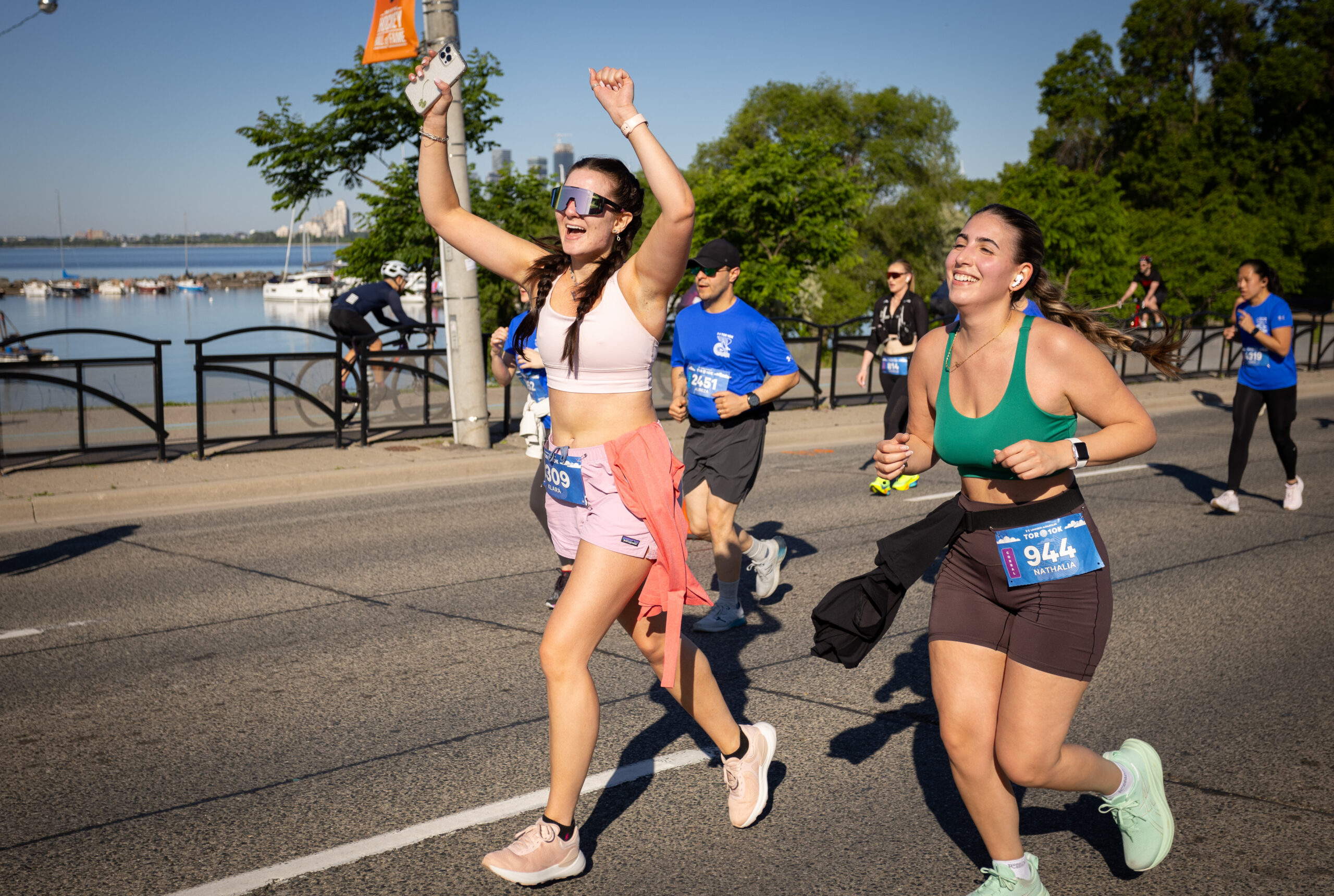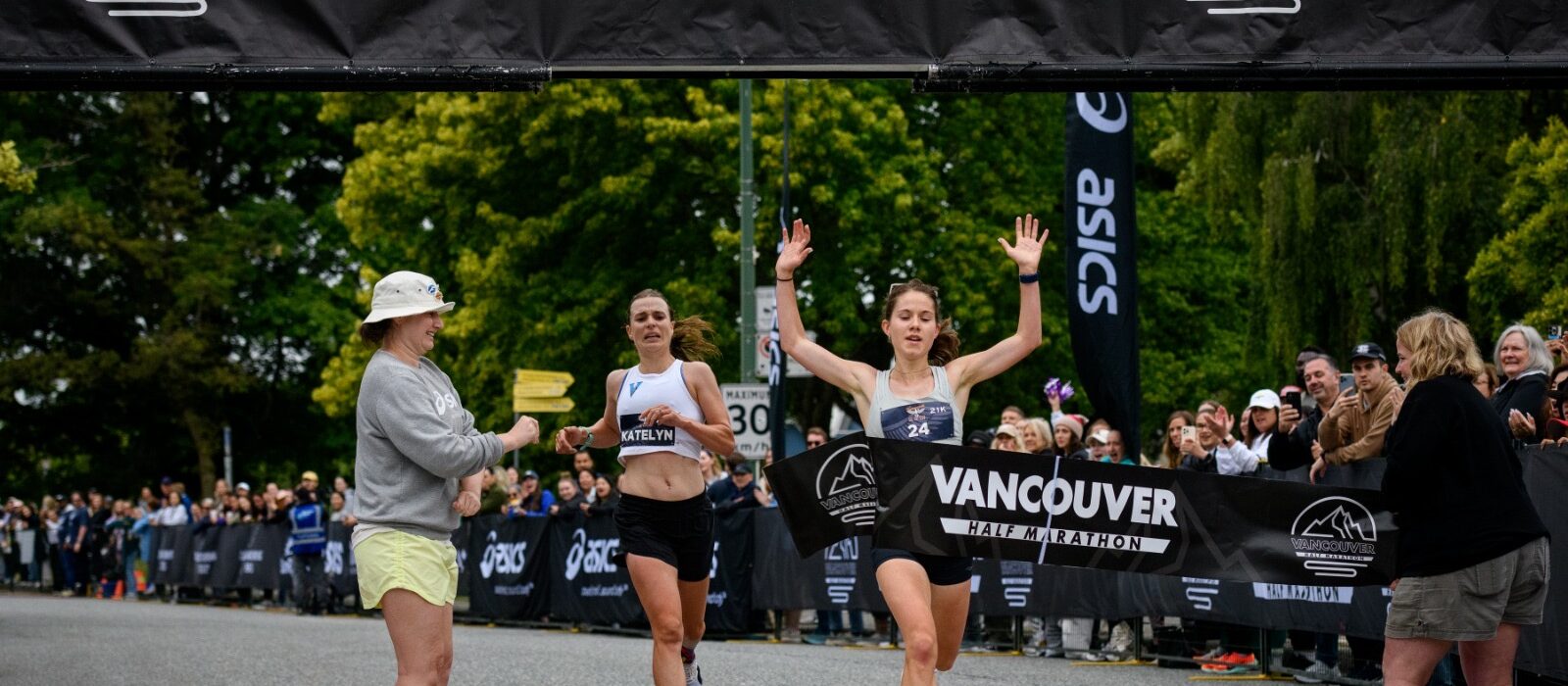
Article by Allison Tai
Cross Training. It’s Time.
I know you know. You should be cross-training. Just like you should be getting eight hours of sleep every night, drinking at least 8 glasses of water and eating clean. It’s definitely hard to get it all in – and still run.
But cross-training goes a long way. Not just in terms of lowering the number on that finish line clock, but also making sure you can get to it in one piece. These are my five favourite cross-training activities for runners and my solutions for making them happen.
Yoga
When I was in my twenties, I thought yoga was a punishment for over-doing it on the miles. Run too much, break yourself, downward dog. Being of a more mature age, I realize the reason my coach sent me to yoga when I was hurt. Yoga is restorative and has amazing potential to heal and realign the body. You can do it before huge injuries crop up when they’re little and manageable, or after, when they’ve swallowed up your ability to even walk pain-free.
Solution: Unlike when I was in my twenties, yoga is easily accessible. You can find a reputable studio on nearly every street, or stream a quick video right to your computer screen. If you are a social person, commit to a class that fits your schedule once weekly to start. If you’re the homebody type who’s pressed for time, upload a short video and commit to doing it after your easy runs for the next month. (Related article – five easy yoga poses for runners)
MyoFascial Release
In case you haven’t heard this term, it’s the fancy pants way of saying “roll around on stuff where your body hurts.” It’s my belief that people should be able to address problems in their own bodies, and see them coming for a long time out. I find out very quickly whether my ankle is tight or my hip is full of trigger points when I dig around with a ball.
Solution: Buy a lacrosse ball and a roller. Then, commit to spending at least 15 minutes per day, every day, all month, to helping your body heal. If you miss a day, that’s fine. But aim for every day. Just make sure to roll gently, never roll over bones and never go to the point of pain. If you cannot relax while you’re rolling, you’re not doing any good. Again, there are a plethora of video guides on the internet. Find what works for you.
Cycling
We are lucky to live in one of the best cities in the nation for cycling. Cycling not only builds your legs and lungs without the impact, it does so while maintaining a very similar cadence or turnover rate as running. When I was coaching triathletes, I would constantly see runners who had reached a plateau transition to triathlon out of frustration and see huge gains. Just be clear on what you want out of the ride, if you are going for a nice easy spin on an active recovery day, go easy… and if you are substituting a hard workout, put in the same effort.
Solution: Bike to commute. Start by riding once or twice a week on easy days. Just make sure you plan your route on bike paths, prepare for all sorts of surprise BC weather, and bring a bike lock.
Hiking
Vancouverites are spoiled by easily accessible world-class hikes throughout the lower mainland. In my opinion, there is no better way to build single leg strength or hip drive than climbing a mountain. Many runners struggle from “lazy glute syndrome” because it’s relatively easy to leave your bum out of the firing pattern when you’re doing most of your mileage on relatively flat terrain. It’s a lot more difficult to get to the top of a mountain without your hips working hard to fight gravity. That increased hip strength and facilitation will likely carry over into your running and into your stride.
Solution: Organize a weekly hiking excursion with friends. The Grouse Grind is a quick, easy and relatively safe way to get in a lot of elevation. Just make sure you wait until it opens.
Calesthentics
It’s a big word for a simple methodology: body-weight training. From air squats, to push-ups and pull-ups, to plyometrics… any time you are using your own body weight, you are doing calesthentics. As a runner, your go to should be things like planks, upper body focused exercises, hip strengthening and single leg work. It’s been shown time and time again that upwards of 90% of injuries are correlated with weak hips and/or a weak core. Even 15 minutes dedicated to your core, hips and your under-utilized upper body will make a big impact on your performance – and longevity – as a runner.
Solution: Make some non-running goals like being able to do a pull-up or 10 push-ups with good form. I have several doorway pull-up bars positioned through out my house. That way I can do chin-ups and hanging leg raised while making dinner or watching my kids take a bath. It’s easy to build calsthenthics into your routine: stand on one leg while brushing your teeth or work toward your pull-up goals between emails. It doesn’t have to be complicated, but it does have to be consistent.
Allison is a coach at Vancity OCR and a competitive OCR athlete, placing second at the World’s Toughest Mudder 2014.








